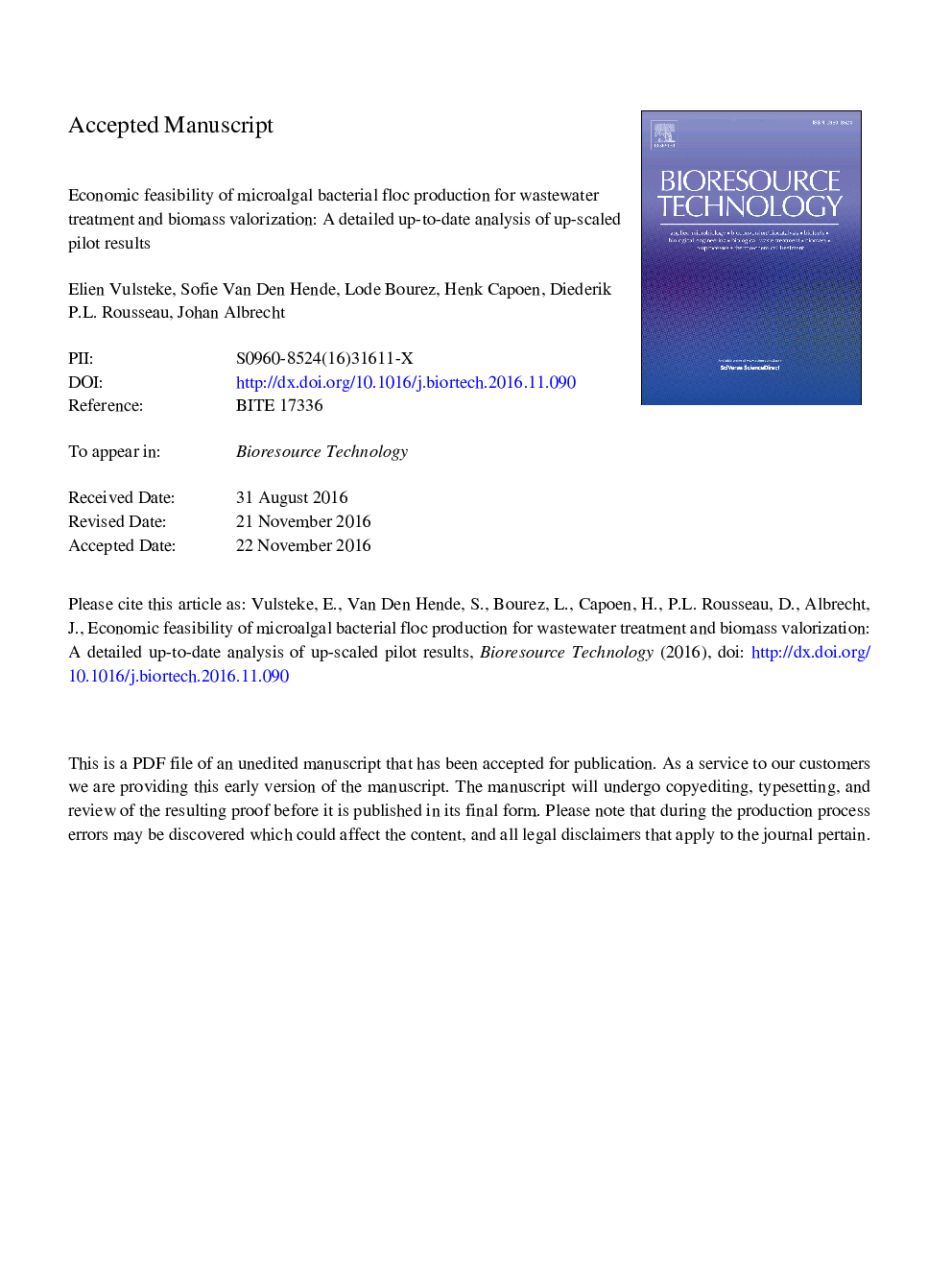| Article ID | Journal | Published Year | Pages | File Type |
|---|---|---|---|---|
| 4997825 | Bioresource Technology | 2017 | 37 Pages |
Abstract
The economic potential of outdoor microalgal bacterial floc (MaB-floc) raceway ponds as wastewater treatment technology and bioresource of biomass for fertilizer, shrimp feed, phycobiliproteins and biogas in Northwest Europe is assessed. This assessment is based on cost data provided by industry experts, on experimental data obtained from pilot-scale outdoor MaB-floc ponds treating aquaculture and food-industry effluents, and from different biomass valorization tests. MaB-floc ponds exhibit a cost-performance of EUR 0.25-0.50Â mâ3 wastewater which is similar to conventional wastewater treatment technologies. The production cost of MaB-flocs in aquaculture and food industry effluent is EUR 5.29 and 8.07Â kgâ1Â TSS, respectively. Capital costs and pond mixing costs are the major expenses. Commercializing MaB-flocs as aquaculture feed generates substantial revenues, but the largest profit potential lies in production of high-purity phycobiliproteins from MaB-flocs. These results highlight the large economic potential of MaB-floc technology, and justify its further development.
Keywords
Related Topics
Physical Sciences and Engineering
Chemical Engineering
Process Chemistry and Technology
Authors
Elien Vulsteke, Sofie Van Den Hende, Lode Bourez, Henk Capoen, Diederik P.L. Rousseau, Johan Albrecht,
